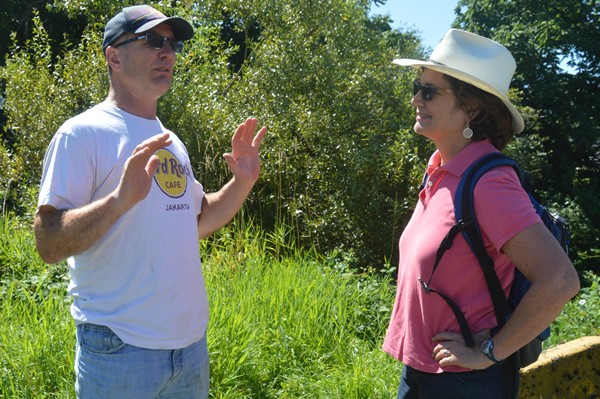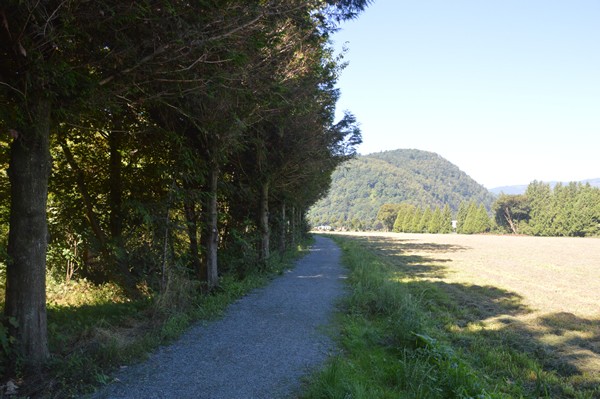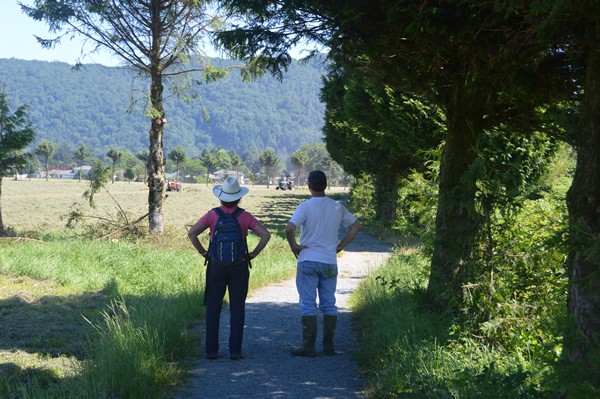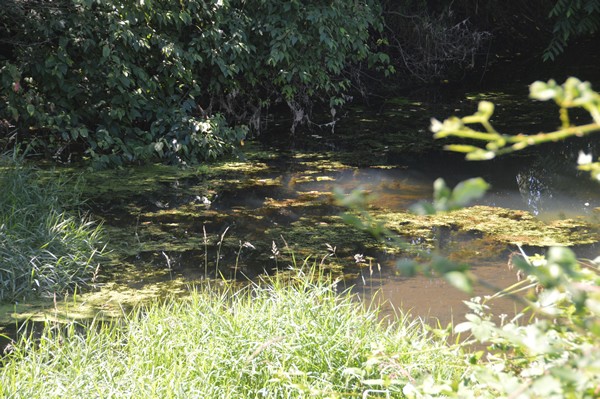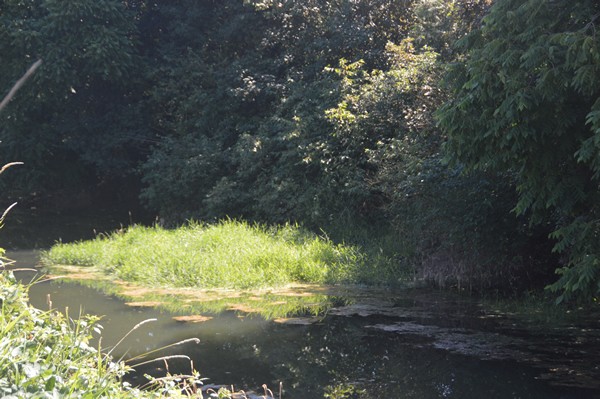Site Description
Name of the site: Holberg Farm
Address: Agassiz | Fraser Valley
Size: 160 acres owned + 40 acres rented
Type of production: Dairy (180 cows)
Number of people employed: 3
Owned property: Family owned since 1960
“We’re trying to show that agriculture and the environment aren’t mutually exclusive; you can have both. For example, a narrow riparian strip can prevent top soil loss, act as a nutrient filter, shade out invasive plants, provide a windbreak, and improve the scenery.”
~Holger Schwichtenberg
The following guides are relevant to this project site
- Riparian Areas in Settled Landscapes
- Guidance for Restoration Activities in Riparian Areas
- Drainage Maintenance in Agricultural Waterways
Click to download the table for stewardship practices at Holberg Farm
Stewardship project partner:
Mike Pearson and Fraser Valley Watershed Coalition
Project Overview:
Holger Schwichtenberg runs a 180 dairy cow operation in Agassiz, British Columbia. His brother, Detmar, has partially restored a branch of the Agassiz Slough located on the Holberg farm. With the assistance of local biologist, Mike Pearson, they have been planting trees and restoring riparian habitat since 2003.
Adjacent to the farm is a dead arm of Agassiz slough, which was cut off by Tuyttens Road. Water is still present in the slough during the spring and fall. One of the first projects Detmar and Mike completed in 2003 was the partial restoration of riparian habitat alongside the slough by planting trees and shrubs.
Holger has a comprehensive manure storage and spreading program. The manure from his dairy operation is gathered and stored as slurry in a covered pit with enough storage space for 6 months. This allows Holger to spread manure in spring when there is less risk of runoff and maximum nutrient uptake. He also uses machinery to inject liquid manure straight into the soil allowing it to be absorbed more easily and cutting down on the odour.
Holger and his family have also leased land bordering their property to the District of Kent. The leased land serves as a walking path for the local community allowing them to enjoy the farm and the riparian area that the Schwichtenberg’s partially restored. The community appreciates access to the walking trail and self-police around issues such as garbage disposal.
We’ve leased this land as a public walking path. The donated strip is about 10 feet wide…. If there are issues, we have the right to take it back within 90 days if we inform the District, but it’s been a non-event. On a sunny day, you will see up to 60 or 70 people using the trail, this is satisfying.
Key Stewardship Actions
- Plant native vegetation
- Proper manure storage
Champions
The families of Holger, Detmar, and Kerstin Schwichtenberg
Motivation
The Schwichtenberg’s are motivated by a strong sense of community and appreciation for their place in the community and the ecosystem. The extensive riparian planting and restoration project is motivated by a desire to give back to the community and a strong belief in sustainable growth.
We are clearly a family farm, but any farm is also part of a community, part of the over-all system, and intrusive to the natural ecosystem.
Holger also believes that these types of projects are an effective and essential way to gain consumer support. By completing riparian restoration projects and giving community members access to their property, Holger is also advertising what he and the dairy industry are doing for processors and consumers.
I like to showcase what we have; we need the consumer support for all this to work. A productive, environmentally-aware, dairy farm, is what many processors and consumers are looking for when buying milk.
Challenges
Holger does not see many difficulties associated with implementing riparian restoration projects and suggests staying 7 feet off a watercourse is not that difficult on their property
We can do a lot to raise public awareness, without making a lot of wholesale changes, if everyone just considered leaving a buffer strip along water courses… in the big picture you’ve done a lot with a very small portion [of land]. If this is the sort of action that keeps people like yourself and the consumers on our side, I think that is a small price to pay.
Holger also acknowledges that some of the work that they have completed in terms of restoration and public access was not “universally accepted by [his] fellow farmers.” He hopes that their efforts to engage with the agricultural community can bring about greater understanding and stronger relationships between himself, other farmers, consumers, and their rural neighbours.
Outcomes
The creation or restoration of riparian buffers has many benefits as Holger notes:
A narrow riparian strip can prevent top soil loss, act as a nutrient filter, shade out invasive plants, provide a windbreak, and improve the scenery.
The restoration and public access projects have created a strong community and consumer support for the farm. Holger also believes that this type of work has an impact on how people see the milk industry and can highlight the industry in a more positive light.
We believe this generates a positive message to the community about farming and the milk industry, in addition to giving something back to the community.
One benefit of their restoration work was the return of frogs to the area, which Holger had not heard since he was a child.
The other neat thing is, is that as a kid growing up there was a lot more water over here, and then over the years it subsided. But with all the work we’ve completed, the frogs are now back, even though the water levels are not as high as before.
Stewardship Practices Menu
Learn more about Species at Risk
Stewardship Practices Case Studies
Fraser Valley & Lower Mainland Sites
Kootenay Sites
Okanagan Sites
Vancouver Island Sites
Contact Information
Find us on social media
LinkedIn: @StewardshipCentreBC YouTube: @stewardshipcentreforbc1047 Instagram: @StewardshipBC

